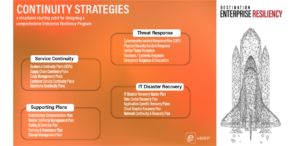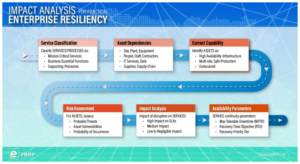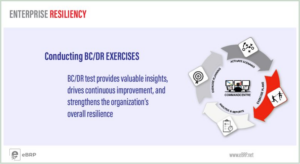Business Impact Analysis (BIA) has long been a cornerstone of Business Continuity Management (BCM), helping companies identify critical functions and prioritize recovery efforts. However, with the advent of new technologies and the increasing complexity of risks, the traditional BIA methodology is under scrutiny. Is it still relevant, or must it adapt to meet modern demands?
𝗕𝗜𝗔 involves identifying critical business functions, assessing the impacts of disruptions, setting Recovery Time Objectives (RTOs) and Recovery Point Objectives (RPOs), and analyzing dependencies on key resources. Its strengths lie in providing a 𝘀𝘁𝗿𝘂𝗰𝘁𝘂𝗿𝗲𝗱 𝗳𝗿𝗮𝗺𝗲𝘄𝗼𝗿𝗸, ensuring regulatory compliance, and fostering cross-functional collaboration to unify organizational priorities.
𝗧𝗿𝗮𝗱𝗶𝘁𝗶𝗼𝗻𝗮𝗹 𝗕𝗜𝗔 𝗳𝗮𝗰𝗲𝘀 𝗰𝗵𝗮𝗹𝗹𝗲𝗻𝗴𝗲𝘀 due to its static, resource-intensive methods and lack of real-time data, which limit flexibility in addressing unexpected risks.
To 𝗮𝗱𝗮𝗽𝘁 𝗕𝗜𝗔𝘀 for enterprise resiliency, organizations must evolve by:
Integrating AI and data analytics for real-time agility.
* Focusing on resiliency metrics that measure 𝗮𝗱𝗮𝗽𝘁𝗶𝘃𝗲 𝗰𝗮𝗽𝗮𝗰𝗶𝘁𝘆.
* Implementing 𝗰𝗼𝗻𝘁𝗶𝗻𝘂𝗼𝘂𝘀 𝗮𝘀𝘀𝗲𝘀𝘀𝗺𝗲𝗻𝘁𝘀.
* 𝗘𝘅𝗽𝗮𝗻𝗱𝗶𝗻𝗴 𝘁𝗵𝗲 𝘀𝗰𝗼𝗽𝗲 to include cyber and supply chain risks.
* Leveraging interactive tools to 𝗲𝗻𝗴𝗮𝗴𝗲 𝘀𝘁𝗮𝗸𝗲𝗵𝗼𝗹𝗱𝗲𝗿𝘀.
While traditional Business Impact Analysis remains vital for business continuity, it 𝗺𝘂𝘀𝘁 𝗯𝗲 𝗺𝗼𝗱𝗲𝗿𝗻𝗶𝘇𝗲𝗱 to address today’s complex environment. By integrating advanced technologies, adopting dynamic approaches, and broadening its scope, organizations can enhance resilience. Striking a balance between traditional methods and innovation enables businesses to withstand disruptions and build robust, future-proof resilience strategies.
Explore 𝗲𝗕𝗥𝗣 𝗦𝘂𝗶𝘁𝗲, 𝘥𝘦𝘴𝘪𝘨𝘯𝘦𝘥 𝘣𝘺 𝗣𝗹𝗮𝗻𝗻𝗲𝗿𝘀, a platform for building Enterprise Resiliency. https://ebrp.net/



